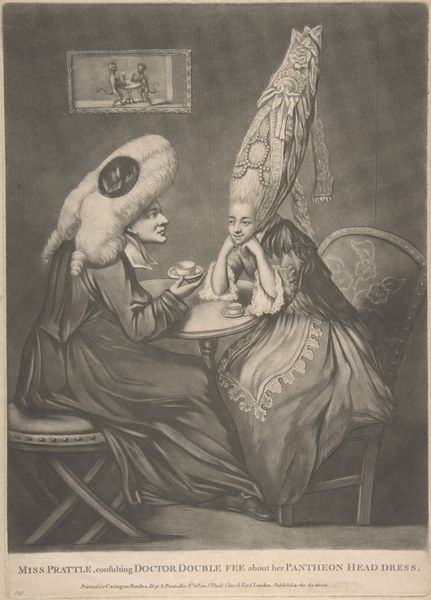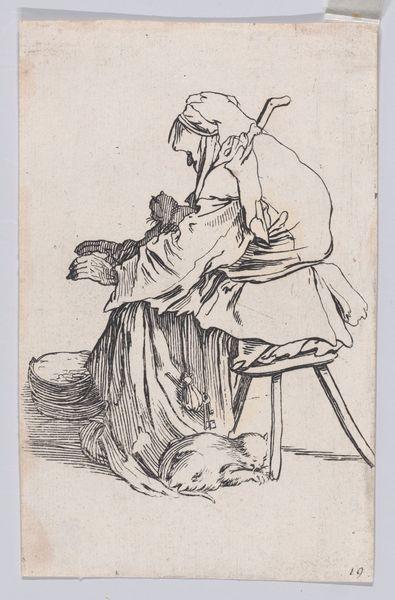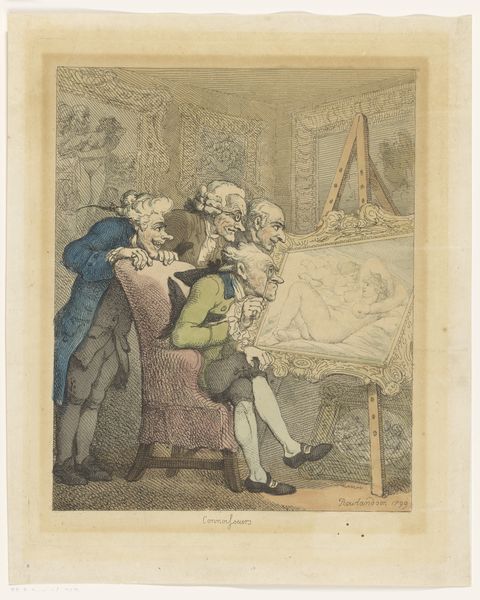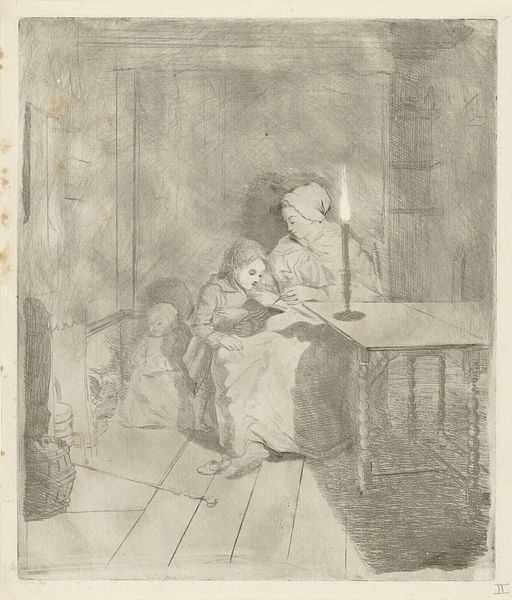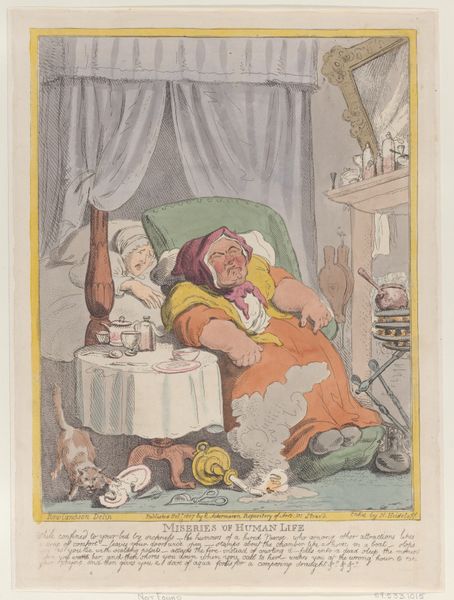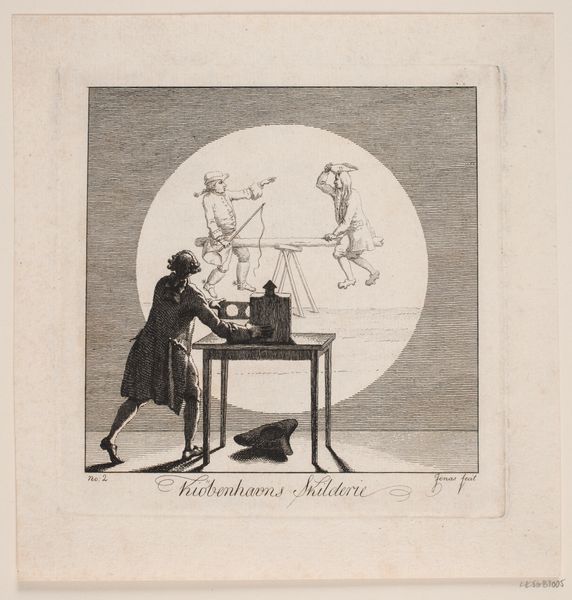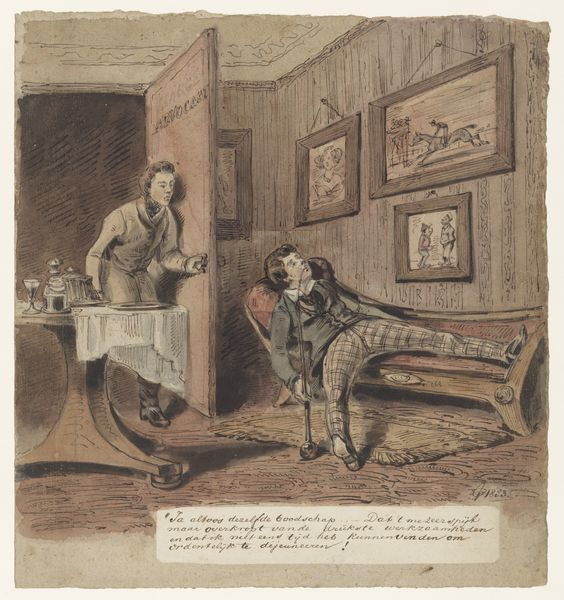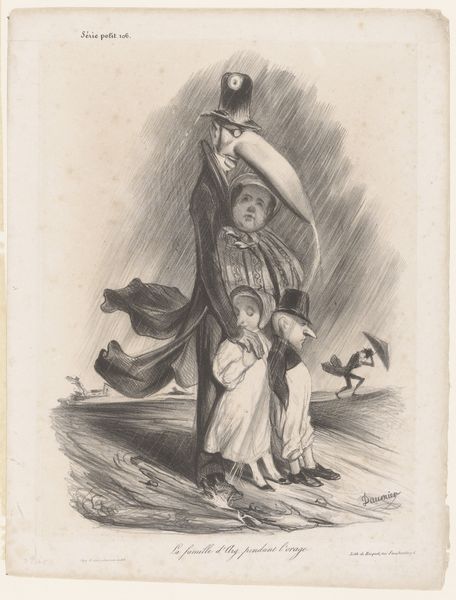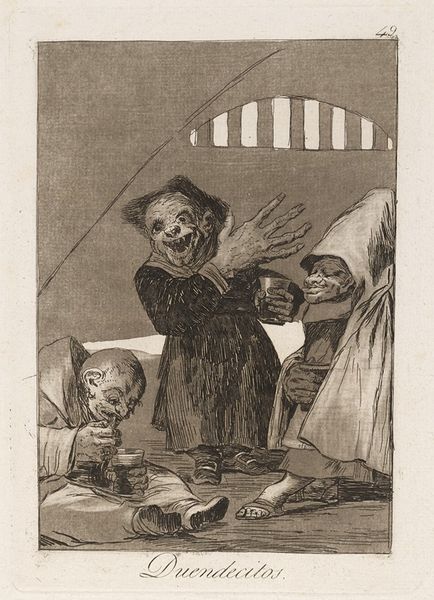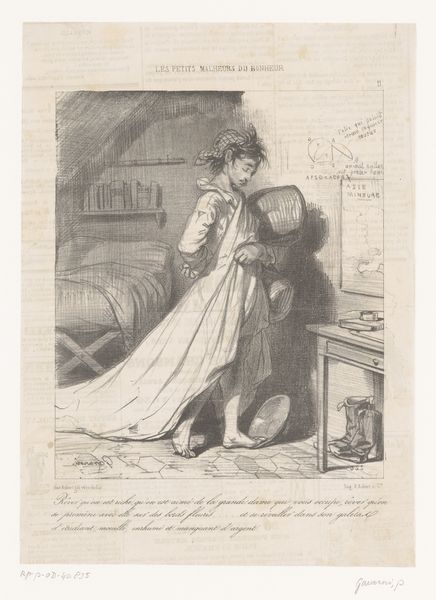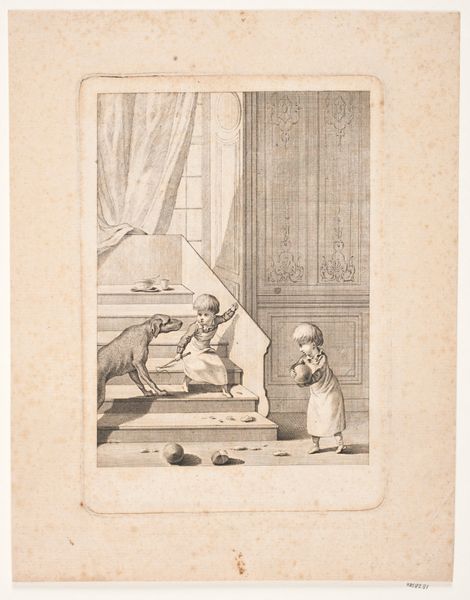
print, watercolor, mezzotint
#
portrait
#
water colours
# print
#
caricature
#
caricature
#
oil painting
#
watercolor
#
mezzotint
#
watercolour illustration
#
portrait art
#
watercolor
Dimensions: 14 x 10 in. (35.56 x 25.4 cm) (plate)
Copyright: Public Domain
Curator: Robert Dighton's "Miss Prattle," created circa 1770-1773, presents us with a delightful social satire. The work, a print using watercolor and mezzotint techniques, can be found here at the Minneapolis Institute of Art. My initial impression is dominated by those extravagant, almost cartoonish wigs. Editor: They’re certainly eye-catching! There’s an immediate sense of performance and artifice, of identities being deliberately constructed through these elaborate hairstyles. What strikes me is the subtle power dynamic being explored—a world dictated by fashion but also deeply intertwined with social critique and commentary about gendered appearances. Curator: Exactly! Dighton utilizes caricature brilliantly. The exaggerated features, the height of the hairstyles compared to the petite figures, contribute to a sense of lightness, of wit. Notice how the pastel palette of pinks and greens and blues, whilst seemingly delicate, further emphasize this absurdity rather than softening it. Editor: I’d argue that the seeming levity belies a deeper exploration of female agency and visibility. Consider that at the time women were increasingly occupying public spaces, challenging established norms. How subversive was it for women to declare identity through extravagant headwear—and how threatening was this behavior to patriarchal power structures? The title, "Miss Prattle," in itself points toward stereotypical accusations about garrulous femininity, right? Curator: An interesting observation, and I see your point regarding agency. Looking closely, the composition creates a structured contrast. The precise linear details of the clothing against the softness of the watercolors. The miniature painting in the background mirrors their activity, another layer of meta-commentary. I also see elements of neoclassicism seeping in here, a reflection of Enlightenment ideals, albeit skewed and satirized. Editor: I see the work as a potent commentary about 18th-century gendered roles and expectations—revealing the way women are subjected to judgment and critique based solely on appearances, something very resonant today in discussions around beauty standards and visibility. And I also love thinking about the act of 'prattling' - was this 'feminine' speech frivolous, or powerful gossip? Curator: The artwork’s power definitely resides in its complexity; surface appearance meets astute social observation. Editor: A print, a light chuckle across time, perhaps but speaking still of timely debates about power.
Comments
No comments
Be the first to comment and join the conversation on the ultimate creative platform.
